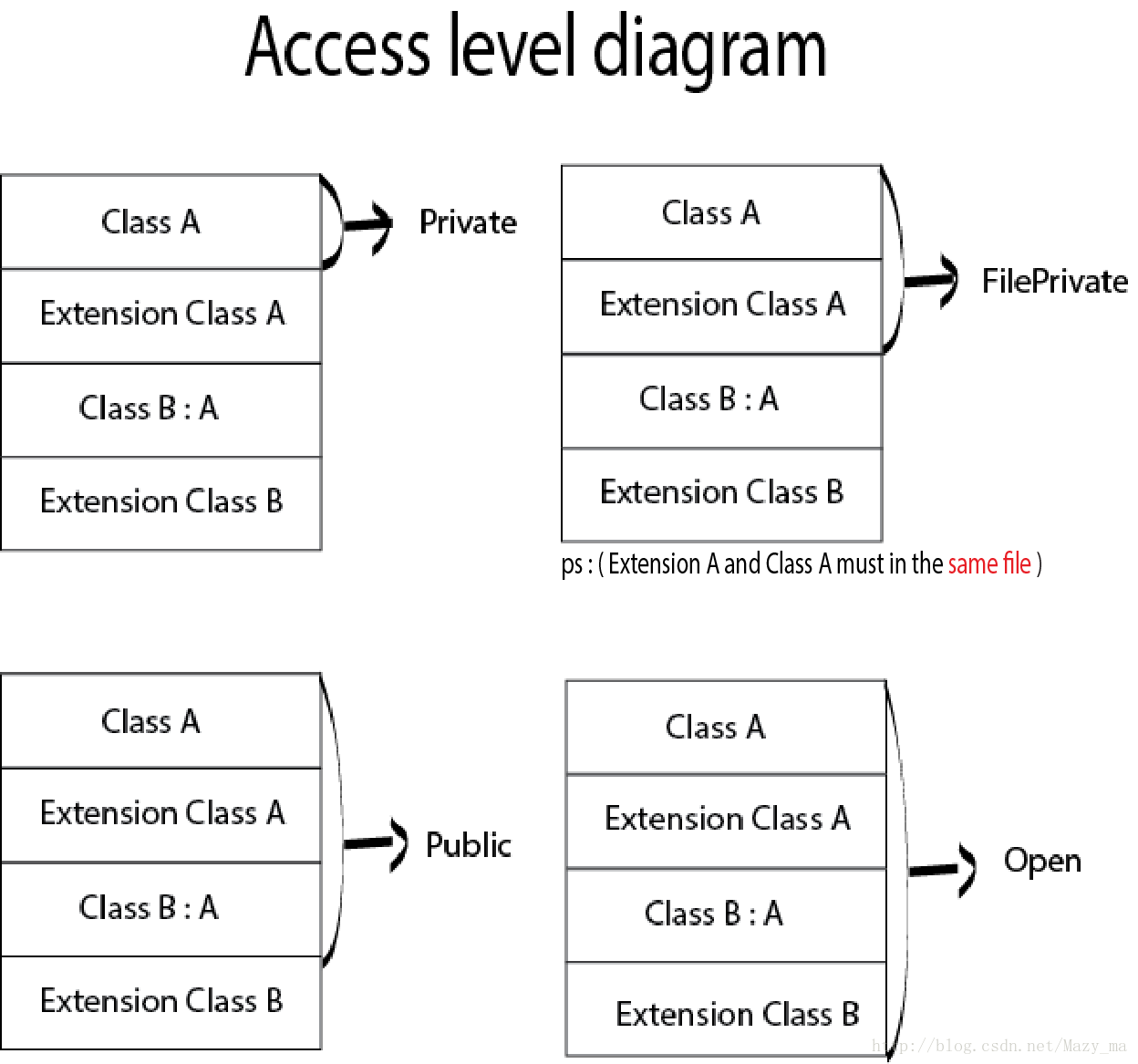static和class的使用 static 使用 在非class的類型(包括enum和struct)中,一般使用static來描述類型作用域。在這個類型中,我們可以在類型範圍中聲明並使用存儲屬性,計算屬性和方法。 1 //other 2 struct Point { 3 let x: Double ...
static和class的使用
static 使用
在非class的類型(包括enum和struct)中,一般使用static來描述類型作用域。在這個類型中,我們可以在類型範圍中聲明並使用存儲屬性,計算屬性和方法。

1 //other 2 struct Point { 3 let x: Double 4 let y: Double 5 // 存儲屬性 6 static let zero = Point(x: 0, y: 0) 7 // 計算屬性 8 static var ones: [Point] { 9 return [Point(x: 1, y: 1), 10 Point(x: -1, y: 1), 11 Point(x: 1, y: -1), 12 Point(x: -1, y: -1)] 13 } 14 // 類方法 15 static func add(p1: Point, p2: Point) -> Point { 16 return Point(x: p1.x + p2.x, y: p1.y + p2.y) 17 } 18 } ``` 19 > 註意: class修飾的類中不能使用class來存儲屬性的View Code
class 使用
1 // other 2 class MyClass { 3 class var bar: Bar? 4 }
但是在使用protocol時,要註意會報一種錯誤,如:"class variables not yet supported"
//other 有一個比較特殊的是protocol,在Swift中class、struct和enum都是可以實現protocol的,那麼如果我們想在protocol里定義一個類型域上的方法或者計算屬性的話,應該用哪個關鍵字呢?答案是使用class進行定義,但是在實現時還是按照上面的規則:在class里使用class關鍵字,而在struct或enum中仍然使用static——雖然在protocol中定義時使用的是class.

1 //other 2 protocol MyProtocol { 3 static func foo() -> String 4 } 5 struct MyStruct: MyProtocol { 6 static func foo() -> String { 7 return "MyStruct" 8 } 9 } 10 enum MyEnum: MyProtocol { 11 static func foo() -> String { 12 return "MyEnum" 13 } 14 } 15 class MyClass: MyProtocol { 16 class func foo() -> String { 17 return "MyClass" 18 } 19 }View Code
Private、FilePrivate、Public、open
四大屬性的使用範圍圖:

private 修飾符
- 只允許在當前類中調用,不包括 Extension
- private 現在變為了真正的私有訪問控制
- 用 private 修飾的方法不可以被代碼域之外的地方訪問
fileprivate 修飾符
- fileprivate 其實就是過去的 private。
- 其修飾的屬性或者方法只能在當前的 Swift 源文件里可以訪問。
- 即在同一個文件中,所有的 fileprivate 方法屬性都是可以訪問到的。
1 class A { 2 fileprivate func test(){ 3 print("this is fileprivate func!") 4 } 5 } 6 7 class B:A { 8 func show(){ 9 test() 10 } 11 }
public 修飾符
- 修飾的屬性或者方法可以在其他作用域被訪問
- 但不能在重載 override 中被訪問
- 也不能在繼承方法中的 Extension 中被訪問
open 修飾符
open 其實就是過去的 public,過去 public 有兩個作用:
- 修飾的屬性或者方法可以在其他作用域被訪問
- 修飾的屬性或者方法可以在其他作用域被繼承或重載 override




